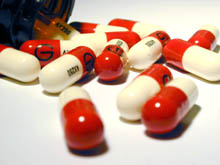ANTIBIOTICS USAGE

Hai friends when we get any cold or cough we prefer to use our own remidies or the known medications and antibiotics.when it doesnot works we will consult a doctor and he will prescribe antibiotics for about five days or one week. But most of the patients do not complete the prescribed duration and they will not take any antibiotics after they feel that they have cured. But remember when a doctor prescribe it for five or one week we should complete the course of duration of the drug . Because when we use the two days we feel better. But when we leave the usage of drug the bacteria or virus gets resistance to that drug and it may cause severe problems. So when a doctor prescribes you with an antibiotic use it for the prescribed days so that the disease can be cured completely. If you have any complaints or any side effects regarding the drugs consult your prescribed doctor immediately. HAVE A SAFE RECOVERY ISSUED
